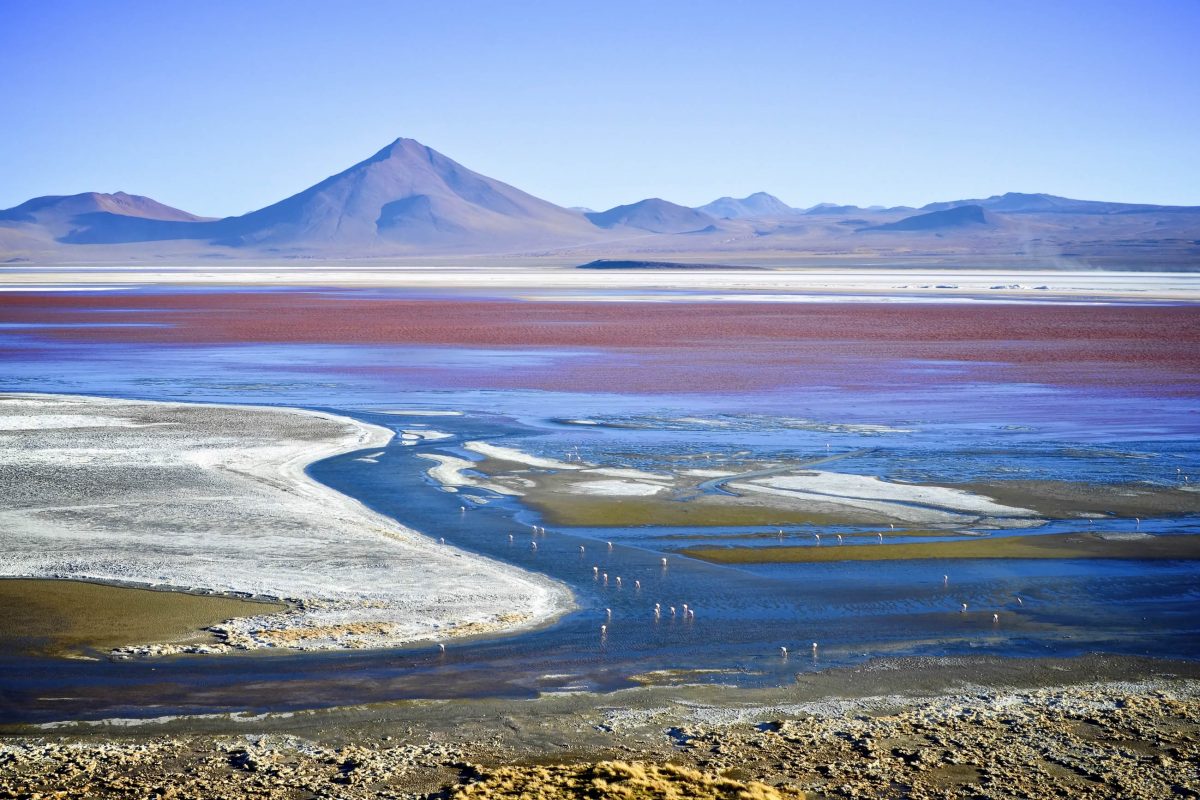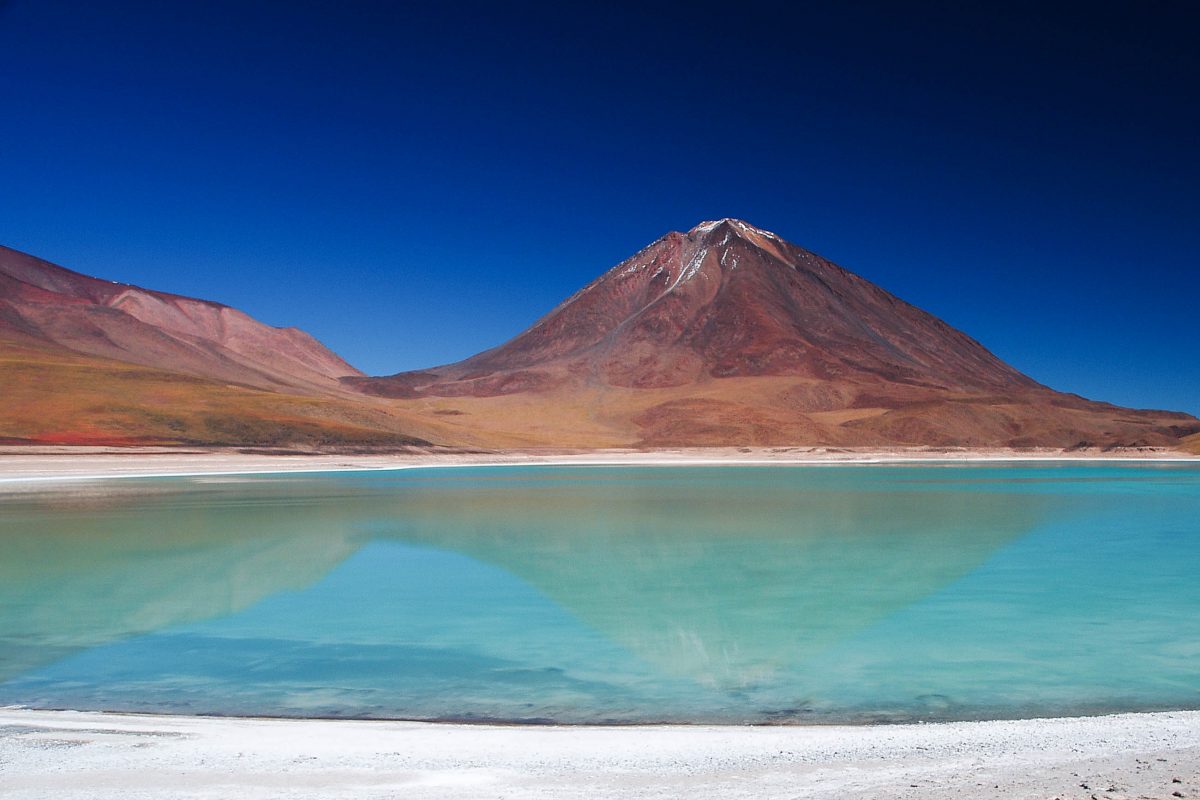Die Laguna Colorada liegt im äußersten Südwesten von Bolivien zwar relativ abgelegen, begeistert jedoch durch ihre spektakuläre Färbung und Schwärme von Flamingos.
Die Laguna Colorada, auch „Red Lagoon“ genannt, stellt ein spektakuläres Naturschauspiel im südwestlichen Bolivien dar. Algen und Mineralien haben das lediglich ca. 1m tiefe Wasser der Lagune blutrot gefärbt. Der rund 60 Quadratkilometer große See liegt im Nationalpark Andina Eduardo Abaroa eingebettet in eine trostlose Wüste aus Salz und Fels. Für Schwärme von Flamingos bietet der leuchtend rote Salzsee eine reiche Nahrungsquelle.
Inhaltsverzeichnis
BILDER: Laguna Colorada
Anreise zur Laguna Colorada

Touren zur 4.278m hoch gelegenen Laguna Colorada starten von Tupiza oder Uyuni aus. Aufgrund der schlechten Straßenverhältnisse, die nur mit einem Geländewagen bewältigt werden können, dauert die Reise zur Lagune zwischen 8 und 10 Stunden.
Alternativ kann die Anfahrt von San Pedro de Atacama in Chile angetreten werden. Für die 150km benötigt man etwa 3 Stunden.
Unterkünfte für Bolivien-Urlauber sind direkt vor Ort gegeben. Rund um die Lagune liegen einige kleine Dörfer mit Übernachtungsmöglichkeiten. Idealerweise wird ein Besuch der Laguna Colorada als geführte Tour inklusive Transfer und Quartier gebucht.
Tipp: Warm anziehen! In der Früh liegt die Temperatur an der Laguna Colorada um den Gefrierpunkt. Im Sommer steigt sie tagsüber zumindest auf etwa 15°C.
Laguna Colorada in voller Pracht

Der lange Anfahrtsweg lohnt sich! Gemeinsam mit den Gipfeln der Anden im Hintergrund, den hellen Farbtupfern der Flamingos und den strahlend weißen Inseln bietet die Laguna Colorada einen absolut atemberaubenden Anblick. Rote Sedimente und Algen sind für die leuchtend rote Farbe der Laguna Colorada verantwortlich. Die hellen Flächen bestehen aus dem Mineral Borax, einer für Salzseen typischen Natriumverbindung.
An den reichen Plankton-Vorkommen in der Lagune laben sich James-, Chile- und Anden-Flamingos. Letzterer, auch Gelbfuß-Flamingo genannt, gehört zu den seltensten Flamingo-Arten der Welt. In der kargen Landschaft des Altiplano leben außerdem Pumas, Andenfüchse und Wildkatzen, die sich jedoch kaum je blicken lassen. An Landtieren laufen den Besuchern vor allem Lamas und Alpakas vor die Kameralinse.
Ausflug zur Laguna Verde und Laguna Blanca

Noch etwas weiter südlich, bereits an der Grenze zu Chile liegt mit der Laguna Verde ein weiterer farbiger See. Die grüne Lagune liegt ebenfalls im Nationalpark Andina Eduardo Abaroa zu Füßen des Vulkans Licancabur auf einer Seehöhe von 4.329 Metern.
Nachdem der See neben Magnesium und Kalziumkarbonat auch die Giftstoffe Arsen und Blei enthält, sind an der Laguna Verde keine Flamingos anzutreffen. Diese halten sich dafür in großer Zahl an der direkt angrenzenden Laguna Blanca auf, deren Wasser in strahlendem Weiß leuchtet.
Ausflug zum Geysirfeld Sol de Mañana

Ebenfalls nicht weit von der Laguna Colorada entfernt liegt mit „Sol de Mañana“ das höchste Geysirfeld der Welt. Die 10 Quadratkilometer große Mondlandschaft beeindruckt mit bunten Bergen und rauchenden Löchern, die von vulkanischer Aktivität zeugen.





